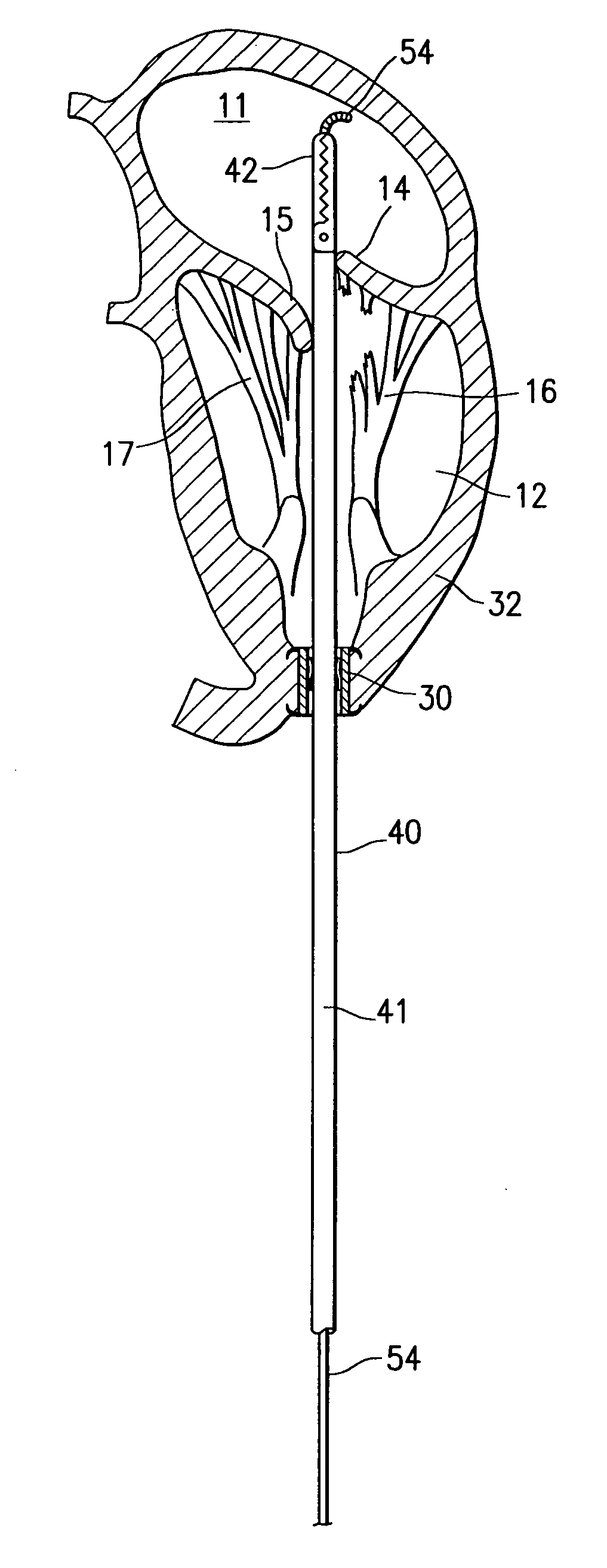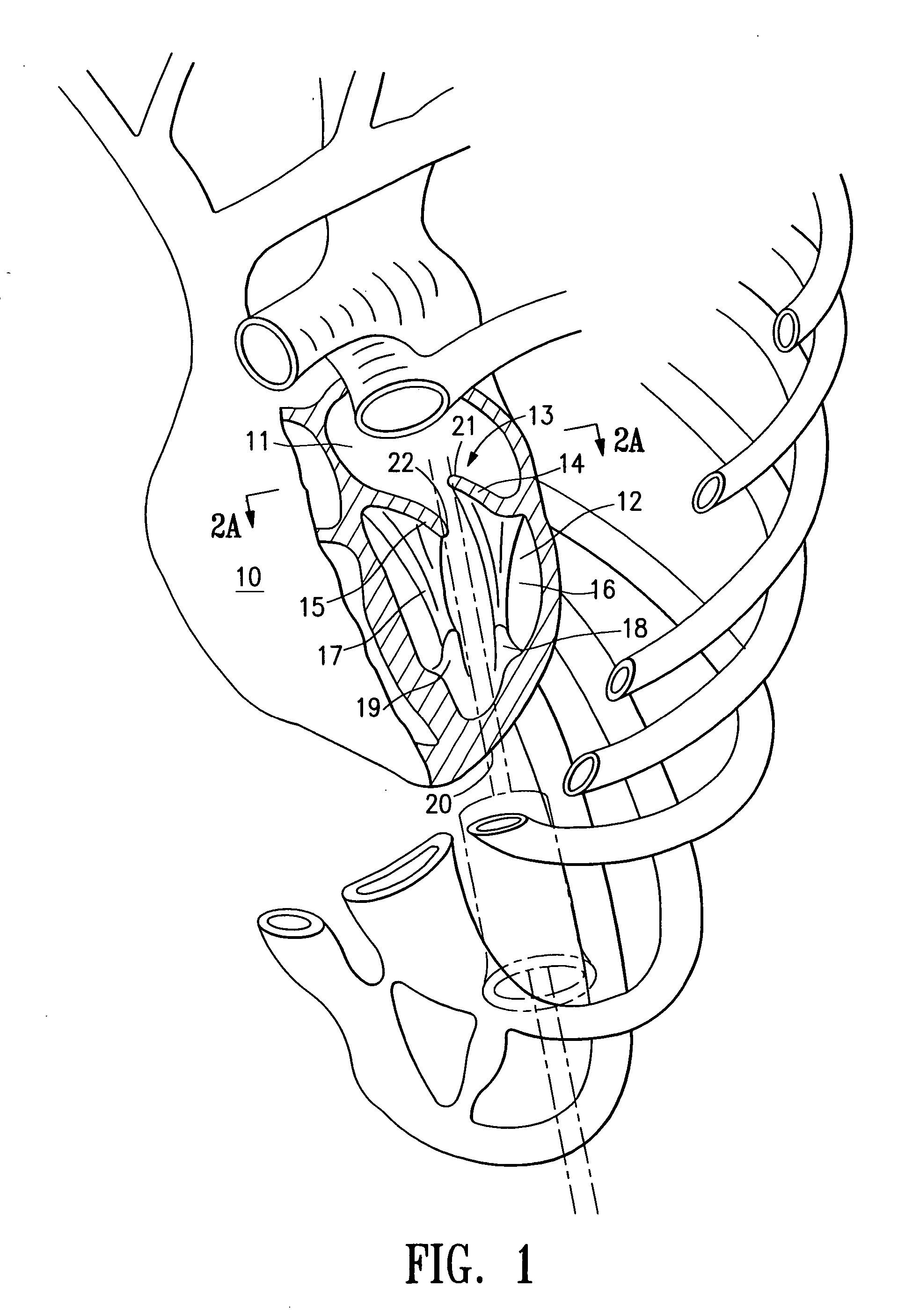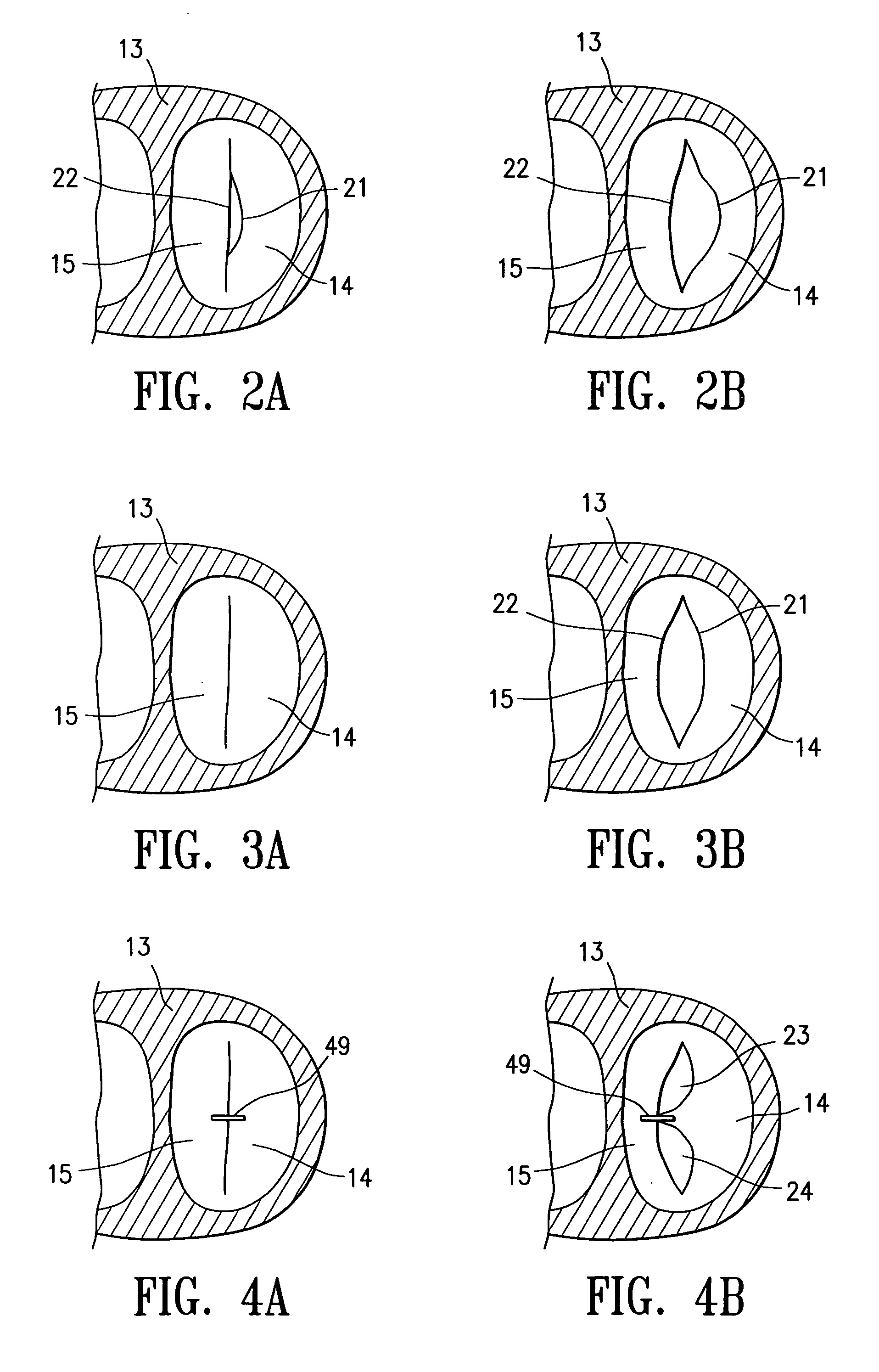Treatments for a patient with congestive heart failure
a technology for congestive heart failure and treatment, applied in the field of therapeutic procedures for patients heart, can solve problems such as the population of patients who are otherwise unsuitable for conventional surgical treatmen
- Summary
- Abstract
- Description
- Claims
- Application Information
AI Technical Summary
Benefits of technology
Problems solved by technology
Method used
Image
Examples
example
[0077] Twenty patients were selected (12 men, 8 women) for thorocoscopically direct left ventricular lead placement. The patients had New York Heart Association Class III or IV congestive heart failure with a mean ejection fraction of 20%±8%. All of the patients had previously undergone transvenous right-ventricular lead placement and subcutaneous implantation of a dual or triple chamber pacemaker but had failed transvenous left-ventricular lead placement due to suboptimal coronary vein anatomy. Surgical entry into the left chest was carried out through a 2 cm incision in the mid acillary line at the sixth intercostal space, following collapse of the left lung. A 15 mm thoracoport (trocar 87 in FIG. 32) from U.S. Surgical was inserted with the tip of the trocar pointing to the left minimize contact with the heart. A 5 mm rigid port (trocar 88 in FIG. 32) was inserted inferolateral to the left nipple of the patient in the sixth intercostal space to allow insertion of a grasper such a...
PUM
 Login to View More
Login to View More Abstract
Description
Claims
Application Information
 Login to View More
Login to View More - R&D
- Intellectual Property
- Life Sciences
- Materials
- Tech Scout
- Unparalleled Data Quality
- Higher Quality Content
- 60% Fewer Hallucinations
Browse by: Latest US Patents, China's latest patents, Technical Efficacy Thesaurus, Application Domain, Technology Topic, Popular Technical Reports.
© 2025 PatSnap. All rights reserved.Legal|Privacy policy|Modern Slavery Act Transparency Statement|Sitemap|About US| Contact US: help@patsnap.com



